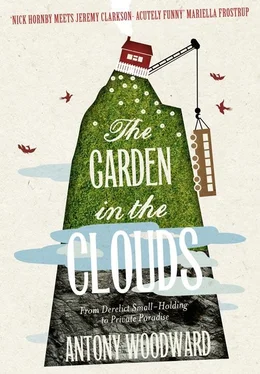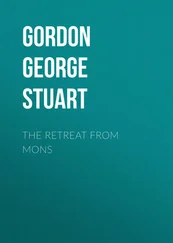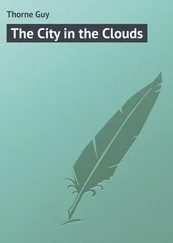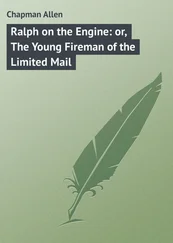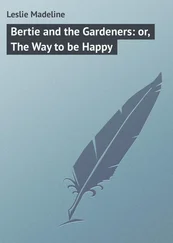1 ...7 8 9 11 12 13 ...17 Under the organisation of these forces of nature, the Scheme triumphed from the start. In the summer of 1927 a printed list was included free with Country Life , detailing 349 gardens that would open in June ‘between the hours of 11 a.m. and 7 p.m.’ for ‘a shilling a head’. The ‘Women’s National Committee’ responsible had done their work well. The list included the King’s gardens at Sandringham, the Duke of Marlborough’s at Blenheim Palace, those of such contemporary gardening giants as Norah Lindsay, and William Robinson’s Gravetye Manor, not to mention ‘the best of modern gardening’ such as Edwin Lutyens and Gertrude Jekyll’s garden at Hestercombe. Such was the success of that first June opening that the Scheme was continued into September, by which time 609 gardens had opened, visited by more than 164,000 people. The hitherto undreamt-of sum of £8,191 was raised for district nursing. Indeed, the Scheme was such a triumph that King George V wrote to the Gardens Subcommittee of the Queen’s Nursing Institute requesting the event should become a permanent way of raising money.
By the outbreak of the Second World War, hardly a great garden hadn’t been recruited. Chatsworth, Hatfield, Major Lawrence Johnston’s Hidcote, Vita Sackville-West’s Sissinghurst—they were all there. So, too, were the former Prime Minister, David Lloyd George’s garden Bron-y-de, and Winston Churchill’s Chartwell, and even the Welsh garden where Beatrix Potter wrote The Tale of the Flopsy Bunnies. In 1949 the guide acquired its distinctive yellow livery, and the NGS found its mascot. In no time, the slightly cumbrous Gardens of England and Wales Open for Charity had become affectionately known as ‘the yellow book’.

Then, in the mid-eighties, Britain went gardening crazy, and a strange thing happened. Where the County Organisers had traditionally had to plead, persuade or order grudging friends, relations, earls, spiky industrialists and absent-minded bishops to do their duty, suddenly they found themselves inundated with applications. From worthy institution, the National Gardens Scheme overnight became an elite club, to which a new class of Capability Browns, Smiths and Joneses all wanted admission. At last there was a formal goal towards which the ambitious amateur gardener could aspire. And as the only official horticultural yardstick available, the Yellow Book naturally became the gold standard. Applications tripled and the County Organisers found themselves in the eminently more in-character role of laying down the law. Numbers of gardens in the Scheme more than doubled between 1980 and 1990 (from 1,400 to 3,000 * ) and, for the first time, formal selection—and rejection—criteria had to be laid down. Getting into the Yellow Book became a whole lot harder, whether you lived in the Home Counties or on top of a Welsh mountain.
To be considered for the National Gardens Scheme, a garden must:
1 Offer ‘45 minutes of interest’.
2 Be a good example of its type (cottage, alpine, herb, etc.)—if it is a type.
3 Have something of special interest (the view, a water feature, a national collection of plants, etc.).
This information was heartening. Forty-five minutes wasn’t so long. The type of garden? Well, there was plenty of time to figure that out. As for having something of special interest, Tair-Ffynnon’s setting and views must be as good as anywhere’s. Yes, on the whole there was room for optimism. All I had to do was learn how to garden.
There was, of course, one other small matter. Would anything grow so high up? But here again, I was inclined to optimism. We already had evidence that potatoes, mangelwurzels and hay had been grown on Tair-Ffynnon’s rocky policies, as that’s what many of its previous inhabitants had lived on. If they could survive, no doubt other things could too. Derek Jarman had coaxed life out of shingle, by the sea, with all that that implied in terms of wind and salt. * Stuff must grow on mountains, too; it was just a matter of finding out what. In fact, in the circumstances, my course of action was obvious: ask Uncle William.

Uncle William was the great gardener of the family, and my mother’s half-brother. He and my Aunt Jeanette lived in a secluded nook of the Dorset Downs not far from Sherborne. Ranged around a seventeenth-century chalk and flint cottage (its thatched roof pulled well down over its eyebrows, at home in any book of idyllic English country cottages) was a garden that even I couldn’t fail to notice was a plantsman’s delight. The last time I was there, one August, summer was in its dusty and desiccated last gasp. Yet in Uncle William’s garden greenery, foliage and flowers were positively clawing their way out of the ground. Apart from a lawn behind the house, there was hardly a square inch of space that wasn’t bursting with trees, shrubs, climbers, pergolas and pots. In his extensive fruit and vegetable garden, the runner beans, raspberry canes and gooseberry bushes were so bowed down with the weight of provender they gave the impression that, however fast anything was picked, there was not the slightest chance of keeping pace with the output. The place had what I would learn was a hallmark of a plantsman at work: narrow paths rendered almost impassable due to the rainforest density of vegetation spilling from either side. Should you dare level a criticism at Uncle William’s garden, it was that you couldn’t see the garden for the plants.
If green fingers existed, Uncle William’s were of the most livid, fluorescent, Martian hue, and chlorophyll coursed through his veins. It was known far and wide that he had only to be handed a plant for it to perk up. Gardening rows between my parents concerning any matter of practical plant husbandry—where a particular plant was best placed, why it wasn’t doing well, what the best treatment should be—invariably ended with a defiant, pursed-lipped: ‘Well. We’ll ask William.’
As a child, I’d found Uncle William slightly intimidating. * He was a naval captain and had a deep, husky voice that exuded peremptory command. I always imagined the huskiness had come from roaring orders across the wind and spray-swept flight deck of HMS Ark Royal , of which he’d been second-in-command in the 1970s, not that I’d ever heard him raise his voice or even seen him in his naval role (though he was wearing his uniform, holding an umbrella over them, in my parents’ wedding photographs). It was a voice that implied that, once a task was stated, it might be regarded as done. I couldn’t imagine any member of the plant kingdom defying it. He was a pillar of the local establishment and churchwarden in his local parish. I was sure he must open his garden to the public, and, on a hunch, looked him up in the Yellow Book. Sure enough, there was his garden: ‘Planted over many yrs to provide pleasure from month to month the whole yr through.’
If anyone knew what would grow on a windswept hill-side 1,300 feet up, it was Uncle William. I hadn’t spoken to him for years and was summoning the courage to make the call when, out of the blue, he called us. He gathered we’d bought an unlikely property in the hills and had ideas about making a garden. (Clearly, word had spread of our offbeat acquisition, though I did wonder how my father had described Tair-Ffynnon to trigger quite such prompt interest.) As it happened, he said, he and Aunty Jeanette were visiting a garden near Usk in a few weeks time as part of the local gardens society (I later asked him about his role in this: ‘Chairman, for my sins’), and he suggested coming on to see us.
Читать дальше
